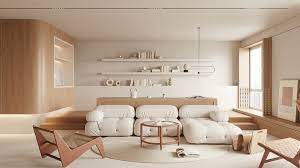Argument against minimalist design.
It may seem contradictory to our design philosophy, but we do hold a high regard for classic and lush interior design.
Minimalist design overlooks the rich historical and cultural significance embedded in traditional and more ornate design styles. These styles carry centuries of design evolution, reflecting historical contexts, cultural narratives, and artisanal skills. Minimalism, in its pursuit of simplicity, can inadvertently dismiss this rich tapestry of design history. The intricate patterns, bold textures, and vibrant colors that characterize many traditional designs are often lost in minimalist spaces.
There is a rising concern about the loss of craft and detail-oriented design knowledge. Traditional and classical design styles often involve detailed craftsmanship and a deep understanding of materials, techniques, and aesthetics. These skills are sometimes honed over generations and are intrinsic to certain cultures and communities. Minimalism, with its focus on simplicity and reduction, may not require or showcase these intricate skills, potentially leading to a decline in these artisanal practices and a loss of this specialized knowledge.
Prioritizing function and form over ornamental beauty can result in a narrowed aesthetic palette. While this can lead to elegantly simple spaces, it can also mean a loss of aesthetic diversity and richness. Other design philosophies embrace decoration, texture, and pattern as integral parts of a space’s character, offering a more diverse and vibrant visual and emotional experience.
The last decades' focus on minimalist design in contemporary discourse can overshadow and diminish the value placed on other design philosophies. This not only affects the appreciation and understanding of different aesthetic principles but also impacts the education and training of future designers. As minimalism becomes more prevalent, there's a risk that upcoming designers might have a limited exposure to the wide array of other design philosophies, potentially leading to a homogenized future in interior design where alternative aesthetics are underexplored.
Our appreciation for all forms.
